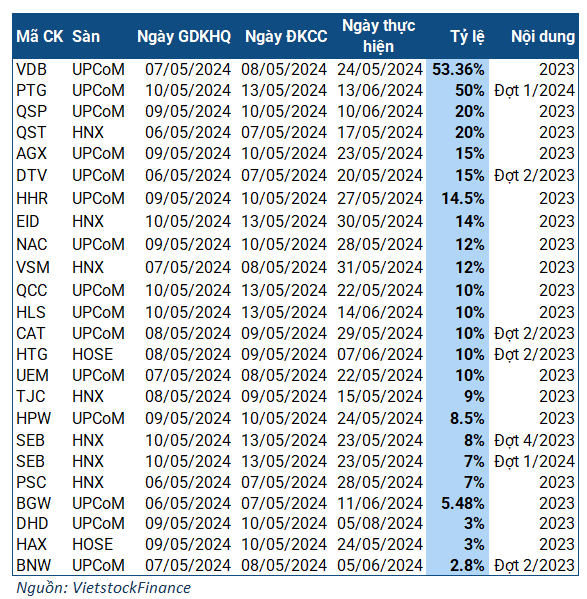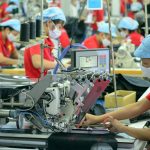Why BRT System Will Be Replaced by Urban Railways
Yesterday (May 15th), the Supervisory Group of the Standing Committee of the National Assembly worked with the People’s Committee of Hanoi on the “Implementation of Policies and Laws on Ensuring Order and Safety of Traffic from 2009 to the end of 2023” within the boundary of Hanoi.
During the working session, Vice Chairman of the People’s Committee of Hanoi, Duong Duc Tuan, informed that Hanoi is studying the adjustment of the integrated transport planning within the infrastructure planning of the Capital’s Master Plan, in sync with the Capital’s Master Plan, which includes adding 24 traffic routes connecting various provinces and cities within the Capital Region.
According to the adjustment of the Capital’s Master Plan, for the BRT route, Hanoi will replace the current BRT line with an urban railway line.
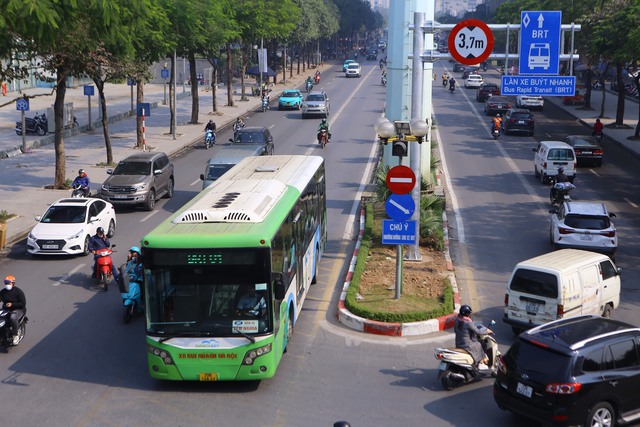
The BRT bus route faces many limitations after several years of operation. Photo: Dang Khoa
The current BRT rapid bus line is the route 01 Kim Ma – Ha Dong, put into operation since December 2016 with a total investment of over 55 million USD (about 1,100 billion VND). The route is over 14 km long, using 55 80-seat buses with a cost of over 5 billion VND per bus.
The project is implemented with a loan from the World Bank with the aim to improve the situation of traffic congestion and pollution; to establish the foundation for developing public transport infrastructure; to encourage people to switch from personal vehicles to public transport.
According to the plans, in the period from 2011 to 2030, the city will build 8 express routes – BRT, but currently, only one has been completed. Due to only having one route and building a priority lane by taking 1/3 of the cross-section of the Giang Vo – Lang Ha – Le Van Luong radial road with high traffic volume, the operating units have made efforts, but the operation and exploitation of the route are facing many limitations.
Tien Phong Newspaper cited Mr. Tuan’s analysis during the working session, stating that due to the high traffic volume and the priority lane being exploited according to the standard, the express bus operates no differently from a regular bus. During rush hour, it still operates slowly like other regular bus routes. Based on this reality, in the upcoming adjustment plan for the overall development of traffic, the city plans to replace the BRT bus route with an urban railway route that has just been added and operates along the same route: Kim Ma – Yen Nghia.
Hanoi Accelerates the Progress of 14 Urban Railway Routes
According to the Hanoi Capital Planning for the 2021-2030 period, with a vision to 2050, which has been approved, Hanoi has determined that there will be a specific mechanism to accelerate the construction progress of 14 urban railway lines with a total length of 550 km. This urban railway system is identified as the “backbone” of urban transport.
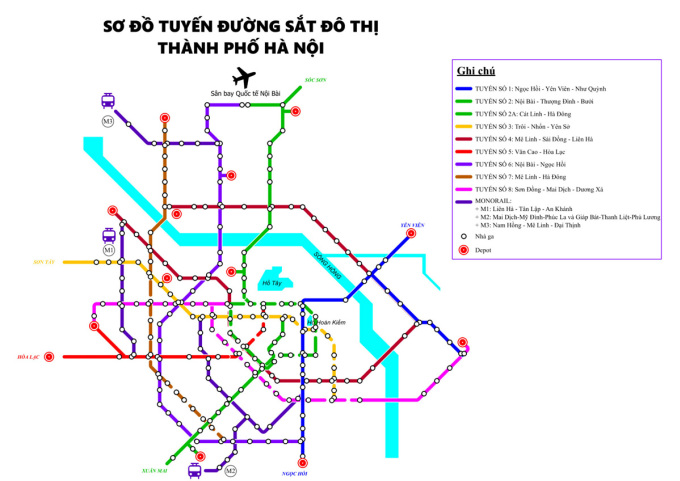
Diagram of Hanoi’s urban railway lines according to the Transport Planning to 2030. Source: Hanoi People’s Committee
In addition to continuing to implement 10 urban railway routes according to the Overall Construction Plan of the Capital to 2030 (Plan 1259), the additional plan includes 4 routes: Ngoc Hoi – Thuong Tin – Terminal 2; Me Linh – Co Loa – Yen Vien – Duong Xa; Cat Linh – Le Van Luong – Ring Road 4; and Vinh Tuy – Minh Khai – Truong Chinh – Lang – Nhat Tan.
In addition, the city will build a light rail (monorail) overhead, running along both banks of the Hong River, combining tourism, scenery, and connecting the Old Quarter area, while preparing the conditions to cooperate with the Central Government to build the North-South high-speed railway line.
Developing urban railways is considered a crucial solution to limiting motorbikes and reducing other personal vehicles in the inner city.
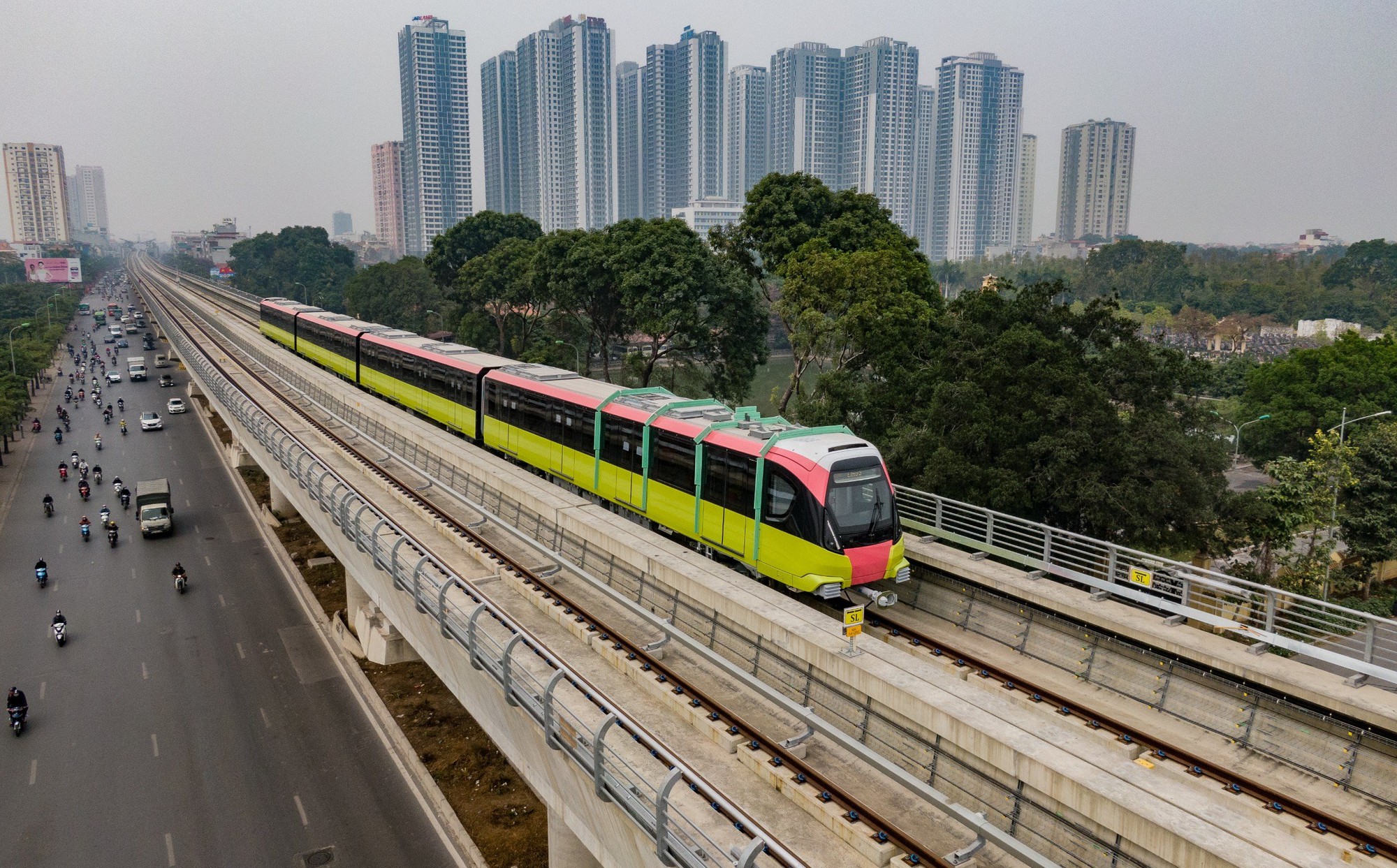
Hanoi expects to commercially exploit the Nhon – Hanoi Railway Line before October 10th, 2024.
Over the past time, Hanoi has actively coordinated with ministries and branches to organize workshops on various fields of the Law project, including developing urban railways and developing the city in the direction of public transport (TOD) … to incorporate into the Law.
The most recent workshop was the “Urban Railways in an Intelligent Transportation System to Reduce Traffic Congestion, Leading to Reducing Personal Vehicles,” held on April 11th.
At the workshop, delegates agreed that currently, Hanoi’s traffic infrastructure is severely overloaded, especially in the inner city area and the radial axis routes. To minimize personal vehicles and overcome traffic congestion, it is inevitable to invest in public passenger transport. In which, the urban railway network must be the “backbone” of the public transport system. Therefore, it is crucial to promote investment in building the urban railway network.
Delegates also proposed solutions to accelerate the progress of building the railway system as planned by Hanoi.
Accordingly, Former Deputy Minister of Construction Le Quang Hung suggested harmonizing planning, ensuring that planning precedes implementation.
“In the context of adjusting the Hanoi Capital Master Plan, including the railway system, it is necessary to research and standardize the planning of the urban railway system, clarifying the number of lines to be built, and having an implementation plan to ensure feasibility,” said Mr. Le Quang Hung. He also proposed developing a Resolution of the National Assembly on building an urban railway system with various mechanisms and policies to facilitate its implementation.
At the workshop, Mr. Nguyen Van Thai (Project Management Board of Railways) said that one of the fundamental reasons for the delay in the progress of the projects in the past was the land acquisition process. Therefore, it is necessary to separate the land acquisition part of the urban railway project into a separate sub-project and implement it independently before the main project for a suitable period, so that when the main project is implemented, it will have basically cleared the entire land.
Agreeing with this view, Director of Hanoi Urban Railway Project Management Board Nguyen Cao Minh also proposed establishing a mechanism, a land acquisition and compensation plan, and land recovery ensuring harmonious benefits among the people, the state, and enterprises. In addition, it is necessary to pay attention to mobilizing investment capital, resources from land in the planned TOD areas, and procedures for investment implementation.
Details of Hanoi’s 14 Urban Railway Lines:
1. Ngoc Hoi – Yen Vien – Lac Dao
2. Soc Son – Noi Bai – Thuong Dinh – Xuan Mai
2A. Cat Linh – Ha Dong – Xuan Mai
3. Son Tay – Troi – Nhon – Yen So – Cau Dien
4. Me Linh – Sai Dong – Lien Ha
5. Van Cao – Hoa Lac
6. Noi Bai – Mai Dich
7. Me Linh – Ha Dong – Ngoc Hoi
8. Son Dong – Mai Dich – Duong Xa
9. Ngoc Hoi – Thuong Tin – Terminal 2
10. Me Linh – Co Loa – Yen Vien – Duong Xa
11. Cat Linh – Le Van Luong – Ring Road 4
12. Son Tay – Hoa Lac – Xuan Mai
13. Vinh Tuy – Minh Khai – Truong





























